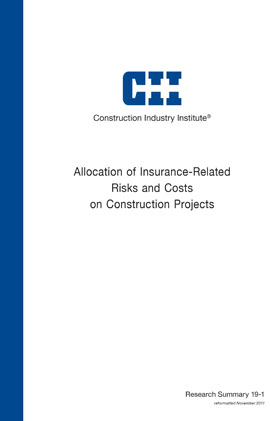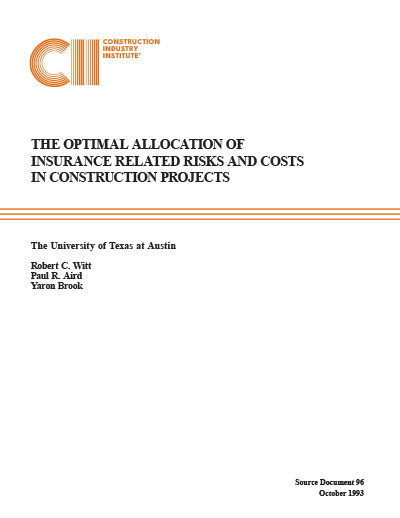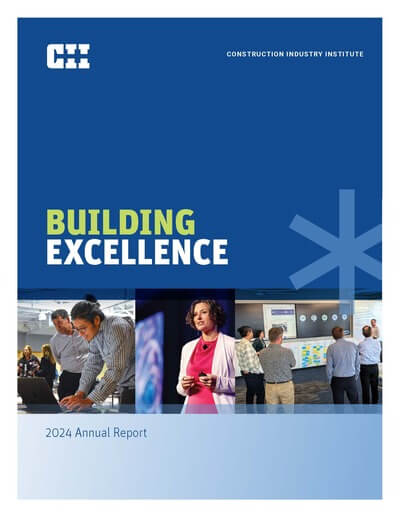
Allocation of Insurance-Related Risks and Costs on Construction Projects
The Insurance Task Force was formed by CII as a result of the extremely hard market for liability insurance that was experienced in the late 1980s. The purpose of the task force was to study the impact of current insurance circumstances on the construction industry and the results of that study are presented herein.
The construction industry presents a complicated variety of exposures to accidental loss ranging from injury to personnel and property to loss of income and other liability exposures. The identification, measurement, and control of these risks is commonly referred to as risk management. A better understanding of risk management and insurance concepts as they relate to the construction industry is necessary.
To achieve the optimal allocation of insurance-related risks and costs on construction projects, owners and contractors must change their attitudes in contract negotiations. Owners and contractors must realize that the costs associated with risk financing on projects has become a significant portion of total project cost (5-7 percent as compared to 1-2 percent in the mid-1980s), and that with proper management and cooperation these costs are controllable.
In addition to changing the relationship between owner and contractor, the task force recommends that changes be made in the following areas:
- Tort reform
- Construction safety practices
- Indemnification requirements
- Contractors’ liability for damage to owner property
- Construction project risk financing
- Education and planning
All of the above recommendations, with the exception of tort reform, are easily and readily achievable today. All that is required to achieve this goal of reducing the insurance-related costs on construction projects is a desire to do so and cooperation between owners and contractors.
The impacts on construction can be diminished if projects would rely less on insurance and other risk financing arrangements, focusing more on cooperation and loss prevention. Five steps to focus on include: (RS19-1, p.2)
- Allocating project risks in a manner to avoid duplication of expenditures for risk financing and/or insurance
- Enhancing safety programs
- Using higher deductibles and/or self-insured retentions
- Handling uninsured exposures in innovative ways
- Developing long-term relationships among construction project participants (including insurers) based on cooperation and trust
Five specific changes are detailed within the research that can be implemented by both owners and contractors to reduce the total cost of risk.
- Construction safety practices
- Indemnification by contractors of owners
- Contractors’ liability for damage caused to owner properties
- Construction project risk funding
- Education and planning



